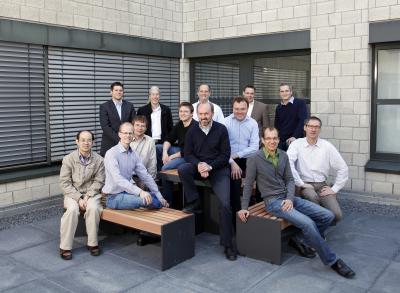In response to the need for power in ultra-short laser pulses, a newly developed laser platform was developed by Fraunhofer Institute for Laser Technology ILT, wherein INNOSLAB amplifier serves as its core.
 The platform for producing ultra-short pulses was developed by an interdisciplinary team from Fraunhofer together with several partners from science and industry. Credit: Dirk Mahler / Fraunhofer
The platform for producing ultra-short pulses was developed by an interdisciplinary team from Fraunhofer together with several partners from science and industry. Credit: Dirk Mahler / Fraunhofer
The slab (laser crystal plate) has been enveloped by four mirrors. Pump radiation penetrates through the slab’s two opposite faces. The mirrors reflect the ultra-short laser pulses. Also, there is a transfer of energy from the pump radiation to the laser pulse until the specific power is obtained.
In order to develop and upgrade this INNOSLAB platform, Fraunhofer Institute for Laser Technology ILT in Aachen partnered with the Max Planck Institute for Quantum Optics MPQ in Munich, the Chair for Laser Technology at RWTH Aachen University, and Jenoptik AG, as well as the subsidiaries of ILT including Amphos and EdgeWave.
The innovators will increase the mean laser output of ultra-short pulse beam sources up to hundreds of watts in order to develop new markets for laser systems with ultra-short wavelengths. Besides providing shorter measuring times in scientific experiments, increased power contributes to high volume industrial production. Development of new beam source was carried out from 2008 to 2011, through two joint projects. Sponsored by Federal Ministry for Education and Research BMBF, this PIKOFLAT project was focused on structuring embossing dyes and printing tools. Besides increasing the quality, it will minimize processing times. As part of this project, embossing cylinders were created.
In association with RWTH Aachen University and the Max Planck Institute of Quantum Optics in Munich, Fraunhofer carried out the second joint project called KORONA. In this project, a compact beam source was generated wherein its ultra-short wavelengths will help examine nano-structures.
Stifterverband's science award was presented to the team.